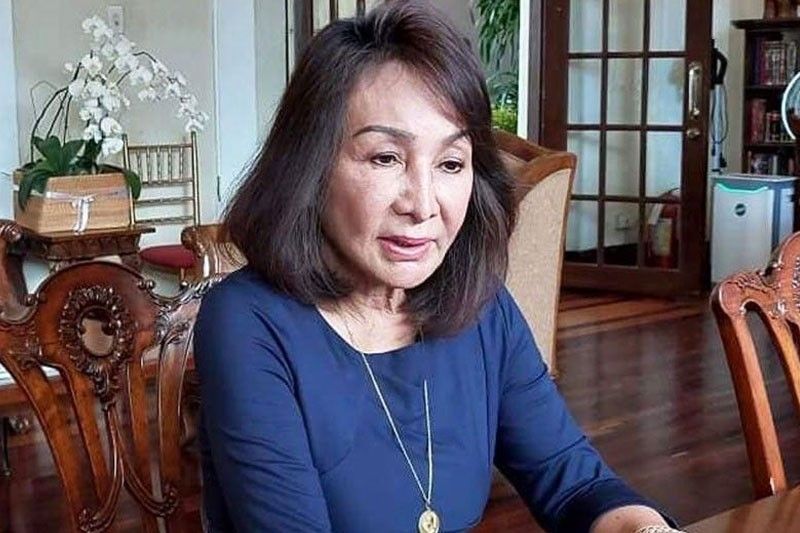Gwen orders demolition of wharf in Bantayan

CEBU, Philippines — A wharf in Bantayan, Cebu was demolished after it was found out that a portion of the structure was built within the foreshore and easement zone of the barangay.
Cebu Governor Gwendolyn Garcia, who issued the memorandum for its demolition, has personally witnessed the destruction of the Baigad Wharf last Wednesday.
In the memorandum, the Assistant Protected Area Superintendent (APAsu)-TSPS SMU Northwest Cebu Cluster has reportedly checked the structure and found out that a portion of it fell within the defined foreshore and easement zones of Barangay Baigad, where building structures of any kind was not allowed.
It added that APAsu conducted a ground validation on February 28 last year and verified that disproportionate coastal erosion was occurring along the shores of Barangay Baigad due to the port, leading to uneven distribution of fine white sand in the area and hampering the free flow of the water.
In her Executive Order (EO) 30 issued September last year, Garcia also identified other establishments in the communities of Sillon, Tamiao, and Atop-atop of the municipality of Bantayan due for demolition.
She said the structures violated Presidential Decree No. 1067, instituting the Water Code of the Philippines and the Cebu Provincial Ordinance No. 2021-01, or the Water Code of the Province of Cebu.
"The further construction of these illegal structures is detrimental to public use and a patent violation of existing laws, rules, and regulations on easements," Garcia said.
Garcia also issued another EO 31 "ordering the demolition of abandoned, unoccupied, and obsolete illegal structures, including pigpens, toilets, and septics," within the easement and foreshore zones of the four barangays.
The governor then gave owners and claimants two weeks to demolish their structures themselves, ordering the police to "strictly monitor" the implementation of her EOs.
DSWD aid
Meanwhile, the Municipality of Tuburan has received P20 milllion worth of various infrastructure projects from the Kapit-Bisig Laban sa Kahirapan Comprehensive and Integrated Delivery of Social Services (KALAHI-CIDSS) of the Department of Social Welfare and Development (DSWD)-7.
According to the DSWD, the KALAHI-CIDSS investment in Tuburan was used in funding projects like the conversion of existing infrastructures into isolation facilities, improvement of health centers, concreting of access roads, construction of training centers, and installation of water lines, water tanks, and streetlights.
The KALAHI-CIDSS program, the DSWD-7 explained, is not to duplicate existing development projects such as infrastructure but rather to fill the gap in areas where development seems to be lacking.
The recipient is responsible for maintaining its functionality and sustainability for long-term use.
Recently, a 0.325 km access road at Sitio Crusher, Barangay Cogon, worth P1.4 million was turned over.
This and all other 53 sub-projects are completed under Phase 1 of Additional Financing, which aims to respond to the call of poor municipalities on their priority needs and be funded for a physical project.
In return, volunteers will work on it through a series of community organizing and grassroots activities, capacitating them to become active and empowered citizens.
“These groups, either organized into associations or committees formed by barangay local government units, are trained to keep these projects operational and provide maintenance according to their formulated plans,” said KALAHI-CIDSS Area Coordinator for Tuburan Divino Bernabe.
The local government unit of Tuburan, as part of their signed agreement with the KALAHI-CIDSS program, must provide funds for the operationalization of these projects, such as maintenance, upkeep, and sustainability evaluation, for further use.
Tuburan Municipal Planning and Development Coordinator Ma. Jasmine P. Sombelon has encouraged volunteer groups to brace themselves for the responsibility of maintaining the projects for good use.
DSWD-7 further stated that for another round of implementation that will run for six months, KALAHI-CIDSS is set to complete a farmer’s market, the construction of training centers, and the improvement of existing multi-purpose buildings, as well as a water system to be set up in the town’s northern part to ensure communities in the highlands get clean and potable water. —Mitchelle L. Palaubsanon (FREEMAN)
- Latest
















